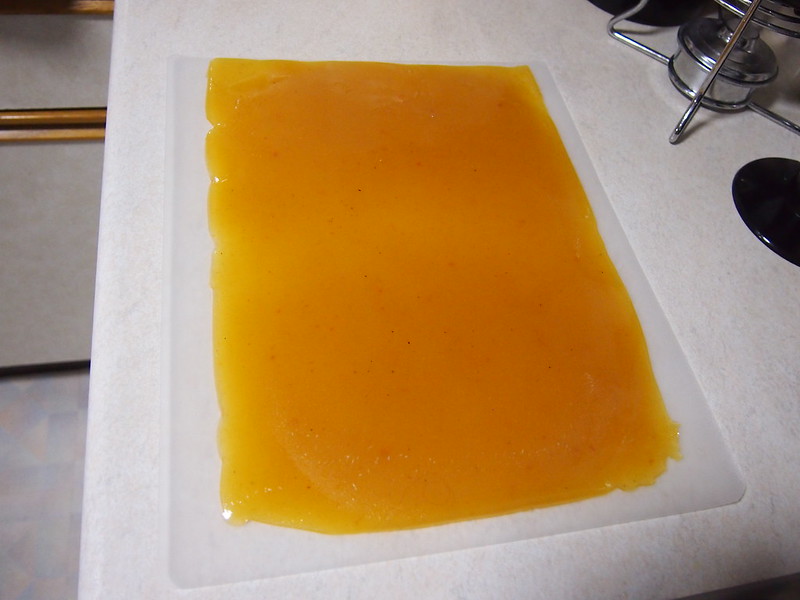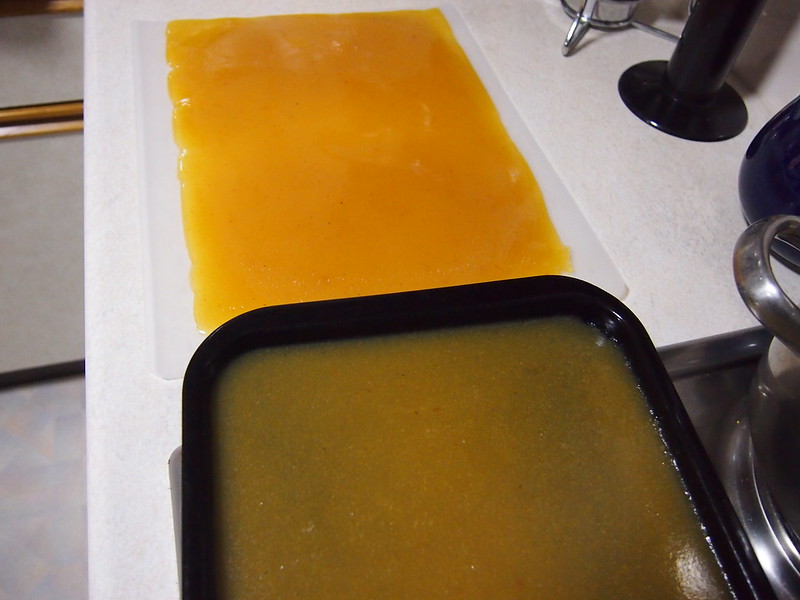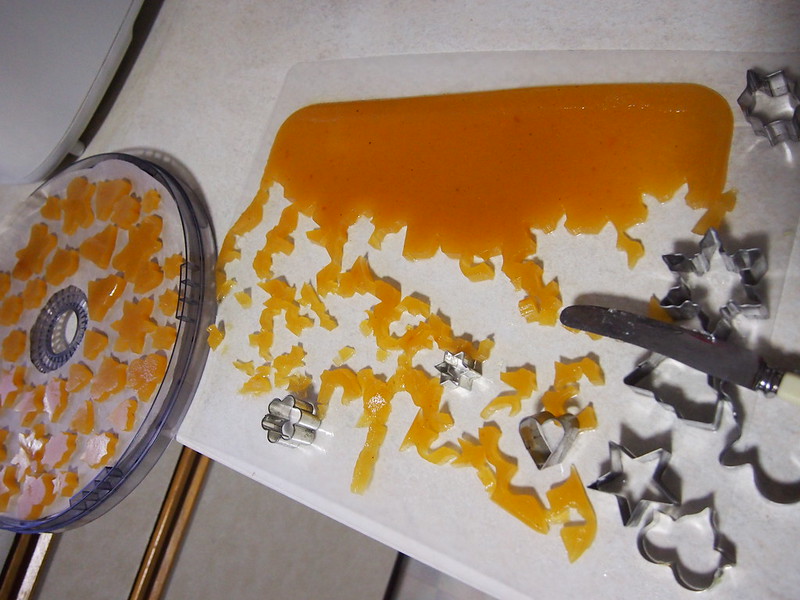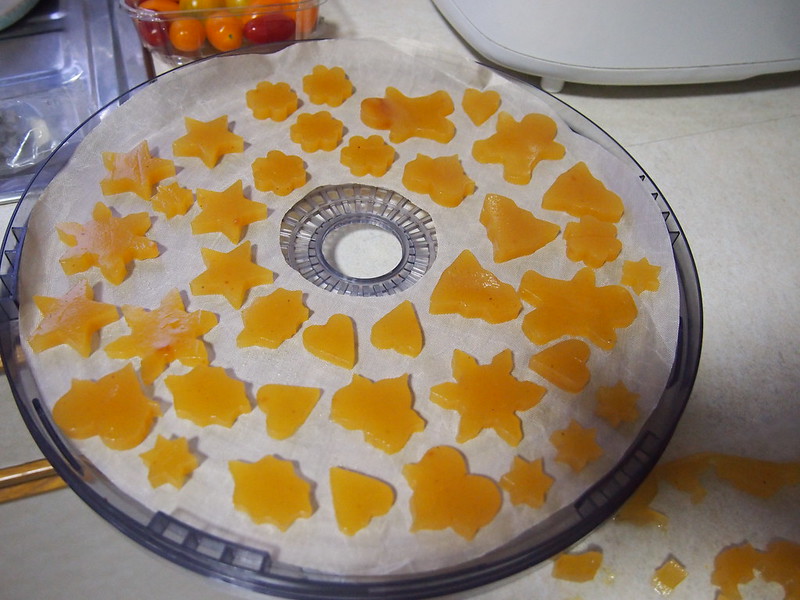By demand, Mrs. sandbenders Quince Cheese recipe.
I would have liked to include more photos but these are the only ones I have to hand, Quince Cheese is something usually prepared at the beginning of December (the Hungarian santa comes on the 5th December) I'll take some more this year and post them into this thread.
Quince cheese has a very long shelf life without refrigeration, in many ways it is an ideal trail snack.
Enjoy.
Ingredients:
Quince
Sugar
Equipment:
Pressure cooker
Plates
silicon moulds (optional)
Method:
Place the Quince (skin and all) in a pressure cooker with a little water (depth about 2cm).

Bring to boil, once the steam begins to escape from the cooker, cook for a further ten minutes.
Check the quince, the flesh should be so soft that you can scrape it away with the back of a spoon.
Allow to cool, they should be cool enough for you to handle, remove from pressure cooker and retain the fluid that remains for later.
Use your fingers to remove the flesh from the cores - this way it is easy and takes less time.
(Of course it is possible to chop up the raw quince and cook it in a pot as well, in this case I would put any offcuts (the core etc.) in a thin cloth bag and cook it together with the flesh - so that the pectin is not lost.)
Weigh the resulting pulp.
Other recipes call for as much as eighty percent of the pulp weight in sugar, thus one kilogram of pulp should have 800g of sugar added to it. However we have successfully used as little as fifty percent with no problems.
You can mix the sugar directly into the pulp, however I mix it with some of the fluid left at the bottom of the pressure cooker, the aim is to use just enough of the fluid to dissolve all of the sugar to form a syrup.
(If one uses too much fluid the cheese dries slower, although it has the advantage of containing all the pectins, which helps with the setting.)

Mix the resulting syrup in with the pulp and stir continuously while cooking (be careful as it will spit). Don’t cook it for too long.
Lemon juice can be added as well to keep the nice colour (and walnuts at the end if you like.)
Take a small amount and pour onto a flat plate, watch how quickly it solidifies.
Once I didn’t trust that it would set properly and ran down to the shop to get some pectin, but in these 20 minutes the whole 4 litres became a solid block, was very hard to destroy it by adding more water - retrospectively I think I should have just cut it up to slices with a thread on a wooden board.
Pour onto your plates (or silicon moulds), you should aim for a depth of around one centimetre.
(If added sugar is 70%, that will preserve if from mold, so it can be even thicker.)

Once set, flip out of moulds
Allow to cool and keep in an airy cool environment. You can cover the plates with a piece of grease paper/cloth (it shouldn’t stick to it) to prevent dust or insects landing on them. Check regularly, and flip them over occasionally.
(When I cover my jams with cellophane, they dry out so much after a while, they become solid as fruit cheese. My store is quite warm in the summer.)
Here is a picture showing some shaped quince cheese placed into a mézes kalács (honey cake) block.

I would have liked to include more photos but these are the only ones I have to hand, Quince Cheese is something usually prepared at the beginning of December (the Hungarian santa comes on the 5th December) I'll take some more this year and post them into this thread.
Quince cheese has a very long shelf life without refrigeration, in many ways it is an ideal trail snack.
Enjoy.
Ingredients:
Quince
Sugar
Equipment:
Pressure cooker
Plates
silicon moulds (optional)
Method:
Place the Quince (skin and all) in a pressure cooker with a little water (depth about 2cm).
Bring to boil, once the steam begins to escape from the cooker, cook for a further ten minutes.
Check the quince, the flesh should be so soft that you can scrape it away with the back of a spoon.
Allow to cool, they should be cool enough for you to handle, remove from pressure cooker and retain the fluid that remains for later.
Use your fingers to remove the flesh from the cores - this way it is easy and takes less time.
(Of course it is possible to chop up the raw quince and cook it in a pot as well, in this case I would put any offcuts (the core etc.) in a thin cloth bag and cook it together with the flesh - so that the pectin is not lost.)
Weigh the resulting pulp.
Other recipes call for as much as eighty percent of the pulp weight in sugar, thus one kilogram of pulp should have 800g of sugar added to it. However we have successfully used as little as fifty percent with no problems.
You can mix the sugar directly into the pulp, however I mix it with some of the fluid left at the bottom of the pressure cooker, the aim is to use just enough of the fluid to dissolve all of the sugar to form a syrup.
(If one uses too much fluid the cheese dries slower, although it has the advantage of containing all the pectins, which helps with the setting.)
Mix the resulting syrup in with the pulp and stir continuously while cooking (be careful as it will spit). Don’t cook it for too long.
Lemon juice can be added as well to keep the nice colour (and walnuts at the end if you like.)
Take a small amount and pour onto a flat plate, watch how quickly it solidifies.
Once I didn’t trust that it would set properly and ran down to the shop to get some pectin, but in these 20 minutes the whole 4 litres became a solid block, was very hard to destroy it by adding more water - retrospectively I think I should have just cut it up to slices with a thread on a wooden board.
Pour onto your plates (or silicon moulds), you should aim for a depth of around one centimetre.
(If added sugar is 70%, that will preserve if from mold, so it can be even thicker.)
Once set, flip out of moulds
Allow to cool and keep in an airy cool environment. You can cover the plates with a piece of grease paper/cloth (it shouldn’t stick to it) to prevent dust or insects landing on them. Check regularly, and flip them over occasionally.
(When I cover my jams with cellophane, they dry out so much after a while, they become solid as fruit cheese. My store is quite warm in the summer.)
Here is a picture showing some shaped quince cheese placed into a mézes kalács (honey cake) block.
Last edited:




